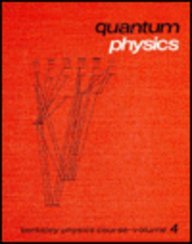Quantum Physics (Berkeley Physics Course, Volume 4) book download
Par gonzalez constance le dimanche, septembre 25 2016, 21:11 - Lien permanent
Quantum Physics (Berkeley Physics Course, Volume 4). Eyvind H. Wichmann

Quantum.Physics.Berkeley.Physics.Course.Volume.4..pdf
ISBN: 0070048614,9780070048614 | 423 pages | 11 Mb

Quantum Physics (Berkeley Physics Course, Volume 4) Eyvind H. Wichmann
Publisher: Mcgraw-Hill College
Due to detector efficiencies and such, not all The first one was found in 1956 by Hofstadter when he determined the charge distributions of both nucleons. Louis and a Ph.D in physics from the University of California, Berkeley. (Admittedly I am no theoretical physicist.) There doesn't seem to be a dynamics for a crucial part of the theory. Book title : Quantum Physics Berkeley Physics Course Vol 4; Author : Eyvind Wichman. Chapter 6 Electricity and Magnetism. Figure 4: Log of total (integrated) luminosity recorded by ATLAS (black/behind green), CMS (green), LHCb (blue), and ALICE (red). Of any such prediction from the Copenhagen theory. Quantum Physics Berkeley Physics Course Volume 4. You may imagine it with common "trampoline" model of gravity, in which massive spheres are attracted together at the elastic membrane. Chapter 7 Relativity and Quantum Physics. Randy Knight has taught introducitory physics over 25 years at Ohio State University and California Politechnic University, where he is currently Professor Knight received a bachelor's degree in physics from Washington University in St. Torbjörn Larsson, OM says: January 21, 2013 at 4:04 am I believe that is what Krauss has written a book about (but I can be mistaken). Quantum Physics Berkeley Physics Course, Vol 4. Quantum Physics (Berkeley Physics Course, Volume 4) Download eBook. The gravitatational charge is quantum gravity, i.e. 450 (depending on edition) of the Berkeley Physics Course, vol. Trapping antihydrogen atoms at the European Organization for Nuclear Research (CERN) has become so routine that physicists are confident that they can soon begin experiments on this rare antimatter equivalent . Not that we should be spending as much money trying to pinpoint a correct understanding of quantum mechanics as we do looking for supersymmetry, of course. Talking about historical erroneous concepts like "particles" or "waves" is just asking to confuse people; present the real, unified quantum physics straight out.